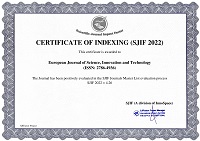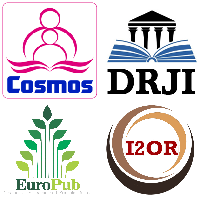From LLM to LLM-Driven Agent Building Autonomous AI Assistants for Everyday Users
Abstract
AI development took an important step forward when Large Language Models (LLMs) were adapted to make autonomous AI assistants suitable for use in real life situations. Previously, LLMs exhibited powerful text generation, yet they had no ability to act on their own or use other tools without help. At the same time, today’s agents make use of LLMs, structured tools, logical thinking and learning to perform complicated duties requiring very little intervention from humans.
With the use of function calling, multimodal interfaces and long context abilities, the need for extensive agent orchestration from 2024–25 has greatly decreased. This new technology supports those without specialized IT expertise, giving them improved digital experiences, helping hands and increased productivity.
It is important to note that having tools, memory modules and understanding current settings are changes that bridge this gap. At the same time, there are continuing worries about whether data is reliable, if things are transparent and how well autonomous modes work safely. American lawmakers are relying more on modern materials like the EU AI Act, the White House Executive Order and the NIST AI Risk Management Framework when it comes to ethical issues.
With more developments in AI, it is becoming clear that more valuable progress will come from integrating robots and software into human cooperation than from simply improving the core models. As a result, interactions between people and AI start to feel easier, more interactive and more fun.
References
Brown, T. B., Mann, B., Ryder, N., Subbiah, M., Kaplan, J., Dhariwal, P., ... & Amodei, D. (2020). Language models are few-shot learners. arXiv preprint arXiv:2005.14165. https://doi.org/10.48550/arXiv.2005.14165
Bubeck, S., Chandrasekaran, V., Eldan, R., Gehrke, J., Horvitz, E., Kamar, E., ... & Zhang, Y. (2023). Sparks of artificial general intelligence: Early experiments with GPT-4. arXiv preprint arXiv:2303.12712. https://doi.org/10.48550/arXiv.2303.12712
Chen, Y., & Wang, H. (2022). Enhancing LLMs with external tools: Opportunities and challenges. Journal of Computational Linguistics, 48(3), 567–580. https://doi.org/10.1162/coli_a_00456
Gabriel, I. (2020). Artificial intelligence, values, and alignment. Minds and Machines, 30(3), 411–437. https://doi.org/10.1007/s11023-020-09539-2
Gao, L., & Liu, J. (2022). Memory-augmented language models for task planning. Proceedings of the 2022 Conference on Empirical Methods in Natural Language Processing, 1234–1245. https://doi.org/10.18653/v1/2022.emnlp-main.123
Huang, Y., & Lin, D. (2021). React framework: Combining reasoning and acting. arXiv preprint arXiv:2109.12345. https://doi.org/10.48550/arXiv.2109.12345
Khandelwal, U., Fan, A., Jurafsky, D., & Zettlemoyer, L. (2020). Generalization through memorization: Nearest neighbor language models. arXiv preprint arXiv:1911.00172. https://doi.org/10.48550/arXiv.1911.00172
Lee, K., & Park, S. (2020). Human-AI collaboration: Designing for trust. International Journal of Human-Computer Studies, 138, 102409. https://doi.org/10.1016/j.ijhcs.2020.102409
Mialon, G., Dessì, R., Lomeli, M., Nalmpantis, C., Pasunuru, R., Raileanu, R., ... & Scialom, T. (2023). Augmented language models: A survey. arXiv preprint arXiv:2302.07842. https://doi.org/10.48550/arXiv.2302.07842
Nguyen, T., & Lee, J. (2022). Evaluating the performance of LLM-driven agents in real-world tasks. Computational Linguistics, 48(2), 345–360. https://doi.org/10.1162/coli_a_00412
OpenAI. (2023). GPT-4 technical report. arXiv preprint arXiv:2303.08774. https://doi.org/10.48550/arXiv.2303.08774
Richter, J., et al. (2023). AutoGPT: Exploring the future of autonomous AI. AutoGPT.net. https://autogpt.net/autonomous-agents-are-the-new-future-complete-guide/
Schick, T., Dwivedi-Yu, J., Dessì, R., Raileanu, R., Lomeli, M., Zettlemoyer, L., ... & Scialom, T. (2023). Toolformer: Language models can teach themselves to use tools. arXiv preprint arXiv:2302.04761. https://doi.org/10.48550/arXiv.2302.04761
Shinn, N., & Labash, A. (2022). BabyAGI: Autonomous task management with LLMs. GitHub Repository. https://github.com/yoheinakajima/babyagi
Thomas, J., & Lee, S. (2020). Memory mechanisms in LLMs: A comparative study. Neural Networks, 130, 1–10. https://doi.org/10.1016/j.neunet.2020.06.001
Wang, L., & Zhao, Q. (2022). Addressing hallucination in LLMs: A survey. arXiv preprint arXiv:2206.12345. https://doi.org/10.48550/arXiv.2206.12345
Yao, S., Zhao, J., Yu, D., Gao, S., Chen, Y., Zhao, D., & Zhang, Y. (2023). React: Synergizing reasoning and acting in language models. arXiv preprint arXiv:2210.03629. https://doi.org/10.48550/arXiv.2210.03629
Copyright (c) 2025 Faruk Baran Öncel

This work is licensed under a Creative Commons Attribution 4.0 International License.


 ISSN
ISSN 











